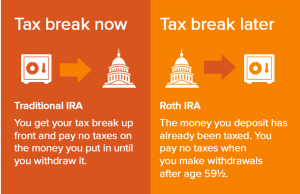
Saving Strategies for Business Owners
Financial PlanningMay 04, 2022
One of the many rewards of owning a successful business is being in control of your income. There is an old saying, “It’s not what you make, it’s what you keep.” What exactly does that mean? Well, as your business grows, one of the many tasks you will encounter is managing your taxes. We’ll leave the intricate details to your CPA and focus on some savings vehicles that lower your taxable income. We’ll take a look at the different retirement accounts available to you with a brief description of each. As always, we recommend consulting with a professional before taking any action.
- Traditional IRA – While the Traditional IRA is not exclusive to business owners, it still may be a viable option. The contribution limits for 2022 are $6,000 for savers under the age of 50 and $7,000 for those that are 50 and older. If you don’t want to save any more than the limits allow, this may very well be the best option for you. You don’t have to attach it to your business and the contributions you make are tax deductible.
- SEP IRA – The SEP IRA is associated with the business and contributions are made by the business. The maximum contribution to a SEP IRA for 2022 is the lesser of 25% of compensation or $61,000. The calculation is more complex for self-employed individuals so be sure to consult with a professional. The SEP IRA is a nice option for a one-person business where the owner wants to put away more than the limits allowed by a Traditional IRA. If you have employees, you are required to contribute to their accounts at the same rate you contribute to your own. For example, if you contribute 20% of your income to yours, then you have to contribute 20% of each employee’s income to a SEP IRA for them. That can add up quickly.
- Simple IRA – The Simple IRA is designed for employers with 100 employees or less. Contributions are made up of both employee and employer contributions. Employees can contribute up to $14,000 in 2022. There is a catch-up contribution for employees over 50 of $3,000. Employers are required to match employee contributions in full up to 3% so that needs be considered. There is an alternative way to handle the match called a non-elective contribution. This requires the employer to contribute 2% for each employee even if they don’t contribute their own money to the plan. The Simple IRA has a similar feel to a 401(k) without as many regulations and costs.
- 401(k) Plan – The 401(k) plan is the most popular plan. There are tax credits and incentives for employers to start a 401(k) plan as the government continues the push to ensure that American workers have access to a retirement plan. The 401(k) is made up of both employee and employer contributions. Employees can contribute up to $20,500 in 2022 with a catch-up of $6,500 for those 50 and older. Employers are not required to match 401(k) contributions. However, the mix of employee and employer contributions cannot exceed $61,000 in 2022 for employees under 50 and $67,500 for those 50 and over. The 401(k) plan is a lot more complex than the others but has a lot of benefits for both the employees and the employer. For further information, please check out our post on 401(k) plan design by clicking here.
Just like any business decision, you have to weigh out the benefits and the costs of each retirement vehicle. The reality is that the more money you make the more you pay in taxes. The retirement plans mentioned above are a great way to lower your taxes and save more money for the long term. Take the time to understand the options available and select the plan that is best for you and your business.


